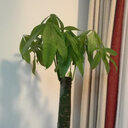Aconitum alkaloids induce cardiotoxicity and apoptosis in embryonic zebrafish by influencing the expression of cardiovascular relative genes.
Հիմնաբառեր
Վերացական
Aconitine (AC) and mesaconitine (MA) are major bioactive diterpenoid alkaloids derived from herbal aconitum plants. Emerging evidence indicates that AC plays a pivotal role in the cardiotoxicity for aconite poisoning. However, the cardiotoxicity data of MA, especially those on the difference between AC and MA are quite limited. Zebrafish embryos were used in this study for toxicological screening, and the cardiac morphology and function were observed. Embryos were analyzed by means of high-performance liquid chromatography (HPLC) after exposure and pharmacokinetic behaviors were also investigated. Results showed that 1.5% of the aconitum alkaloids penetrated into the zebrafish embryos. 2.5 μg/L AC and 20 μg/L MA caused a deficient cardiovascular system with yolk sac hemorrhage and early cardiac dysfunctions were observed in 96 h post-fertilization. AC showed greater cardiotoxicity than MA by comparing the EC50 of pericardium edema. Aconitum alkaloids exposure also resulted in a significant decrease in the expression of cardiac genes (Tbx5, Gata4, and Nkx2.5) from an early stage (12-24 hpf), which may partly explained that the death caused by aconitum is most likely to occur within the first 24 h. In addition, a high percentage of apoptotic cells was observed in the brain region, which identified another potential target of the DDA action in zebrafish embryos.




